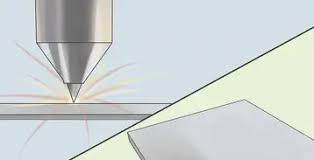
- English
- Español
- Português
- русский
- Français
- 日本語
- Deutsch
- tiếng Việt
- Italiano
- Nederlands
- ภาษาไทย
- Polski
- 한국어
- Svenska
- magyar
- Malay
- বাংলা ভাষার
- Dansk
- Suomi
- हिन्दी
- Pilipino
- Türkçe
- Gaeilge
- العربية
- Indonesia
- Norsk
- تمل
- český
- ελληνικά
- український
- Javanese
- فارسی
- தமிழ்
- తెలుగు
- नेपाली
- Burmese
- български
- ລາວ
- Latine
- Қазақша
- Euskal
- Azərbaycan
- Slovenský jazyk
- Македонски
- Lietuvos
- Eesti Keel
- Română
- Slovenski
- मराठी
- Srpski језик
Four Types of Laser Cutting
2023-07-03
With the continuous development of science and technology, laser cutting technology is becoming more and more sophisticated. Today, I will introduce four types of laser cutting technology.

Laser cutting is one of the most popular methods of metal processing today. The principle is to use a focused high power density laser beam to irradiate the workpiece, causing it to rapidly melt, vaporise, ablate or reach the ignition point of the irradiated material. At the same time, it utilises a high speed coaxial to the beam. The air flow blows away the melted material, thus enabling the cutting of the metal workpiece.
Depending on the thermophysical properties of the material being processed and the properties of the auxiliary gas, laser cutting can be divided into four types. They are laser vapour cutting, laser melting cutting, laser oxygen cutting and laser controlled fracture.
1. Laser vapour cutting
Using a high energy, high density laser beam to heat the workpiece, the temperature of the cut material rises rapidly, reaching the boiling point of the material in a short time, skipping the melting step and starting vaporisation directly to form steam. As the steam is blown out, a kerf is formed in the cutting material.
2. Laser melting cutting
The metal material is heated and melted with a laser. An inactive gas such as nitrogen is blown through a nozzle coaxial to the beam and the molten liquid metal is expelled under the strong pressure of the gas. The advantage of using laser melting cutting is that the cutting edges are relatively smooth and general. No secondary processing is required, the laser energy requirement is high and the gas pressure is high. Suitable for cutting stainless steel, titanium, aluminium and alloy metals.
3. Laser oxygen cutting
The principle of laser oxygen cutting is similar to that of oxyacetylene cutting. It uses the laser as a preheating heat source and oxygen and other reactive gases as the cutting gas. On the one hand, the ejected gas oxidises with the cutting metal, releasing a large amount of oxidation heat; on the other hand, the molten oxide and melt are blown out of the reaction zone to form a cut in the metal. The cutting speed is fast and it is mainly suitable for cutting carbon steel metal materials.
4. Laser controlled fracture
Laser controlled fracture is the use of relatively low laser power to create a sharp temperature distribution in the groove, which causes local thermal stresses in brittle materials and causes the material to fracture along the groove. Higher powers can melt the surface of the workpiece and destroy the cutting edge. It is mainly suitable for cutting brittle materials, such as silicon wafers and glass.



